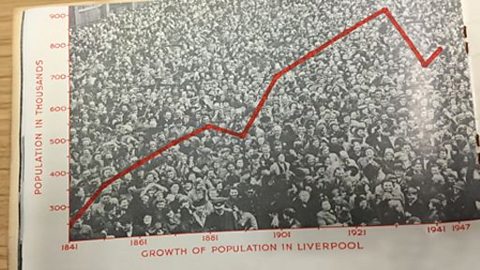One Sunday morning in 1962, over there in 10 Downing Street, the British Prime Minister, Harold Macmillan, received some alarming news from the American President, John F. Kennedy. His worst fears about the Cold War between the Russians and his allies, the Americans, looked as though they were about to be realized. The world seemed to be on the brink of nuclear war.
How can we be sure of this? Sources. The many Government documents here at Kew are vital sources. They give us a unique insight into world affairs and the pressures placed upon key decision-makers. Our first source is this one. It's got "Top Secret" written all over it. This is a note from the US Ambassador's office to the office of the Prime Minister, and it says, "I've just come from seeing the President. He will be sending you an extremely important message on Cuba by about 10 pm today, London time."
So this is hugely secretive, and he wanted to make sure that the Prime Minister is going to be there to receive it. This is the telegram that arrived just a few hours later. The President said, "Photographic intelligence has established beyond question in the last week that the Soviet Union has engaged in a major build-up of medium-range missiles in Cuba." He says, "This extraordinarily dangerous and aggressive Soviet step obviously creates a crisis of the most serious sort, in which we shall have to act most closely together."
There's a real sense of drama building up here. This top-secret document was most probably the first the UK Government heard about the developing crisis. At the time, both the British Prime Minister, Harold Macmillan, and the American President, John F. Kennedy, had no idea how things would turn out. We need further sources to find out how the leaders reacted.
The Americans also sent through this map, and it depicts Cuba, just over here next door to the United States, and it shows the range of the nuclear missiles held in Cuba. And we can see all the key American cities and these red rings radiating out from Cuba, so these are the range of the missiles. Could this be the Americans winding up the diplomatic pressure on the British? They're saying the potential here is for so many major American US cities to be completely obliterated, wiped out, and we need you to stand with us on this.
The Cuban Missile Crisis unfolded rapidly, hour by hour, and these sources show that intense activity between the Americans and British as they sent urgent messages back and forth. This looks like an amazing source. It's a conversation between President Kennedy and the Prime Minister. It says at the top that this takes place at 12.30 am in the middle of the night. And what's wonderful about it is it allows us to see the positions of these two world leaders.
The Prime Minister said, "What worries me - I'll be quite frank with you - having a sort of dragging-on position…" MALE VOICE CONTINUES: "If you occupied Cuba, that's one thing. We've always found our weakness has been when we've not acted with sufficient strength to start with." So the Prime Minister wants to see America taking a tough stance on this and send a strong message to the Russian President, Khrushchev. Kennedy, though, wanted to take a more cautious approach.
"Well, I'm aware, Prime Minister… that the action we're taking is not complete force and does not immediately solve the problem, but the alternative, which is the series of air strikes and invasion of Cuba, we are rather reluctant to do unless it's necessary." President Kennedy was deeply concerned that any conflict in Cuba could turn into all-out war. He says, "What we're attempting to do is to begin this escalation… in a way that lessens the chance of a seizure of Berlin or World War III."
So this is how high the stakes are in this conversation, and the two men are taking slightly different approaches. This source is great for us as historians, giving us a clear insight into the thinking of these two world leaders and how they were doing their best to resolve the emergency and avoid war. As it turned out, the crisis ended less than a month later with an agreement reached between the Americans and Soviets, but for 13 days, the conflict was the closest the superpowers have ever come to nuclear war.
The sources we've looked at today took us back in time and behind closed doors in a high-powered, stressful situation. The map showed us the threat faced by the US, and the telegram showed us the urgency of the situation. The transcript showed us two men trying to devise a strategy to get out of what was potentially going to be nuclear warfare. These sources remind us that we can't take history for granted. We know that it turned out OK, they didn't know it was going to be OK, though, and it could all have gone so horribly wrong.
Video summary
This film looks at historical sources in The National Archives at Kew, relating to the Cuban Missile Crisis of the early 1960s.
Dr. Sam Caslin from Liverpool University explains how a collection of extraordinary documents can help us understand the mindsets and motivation of Harold Macmillan, the former British Prime Minister, and John F. Kennedy, the US president, when faced with the Soviet Union’s build up of medium range nuclear missiles in Cuba in 1962.
Through studying an urgent telegram, a chilling map of the danger facing US cities and minutes of a late night conversation between the two Western leaders, the film shows how close the world came to World War 3 and how the two men worked together to try to avert the crisis.
This clip is from the series Hunting for History.
Teacher Notes
A typical question which historians debate is how serious the Cuban Missile Crisis was and whether nuclear war was a realistic possibility.
Students could be asked to tackle this question using ONLY the documents that Dr Caslin has available, to build up a working hypothesis.
They could then be asked to use more sources or possibly textbooks to see whether their view changes as they gather more source material.
This clip will be relevant for teaching KS3 History in England, Wales and Northern Ireland and 4th level People, past events and societies in Scotland.
Magna Carta. video
A look at what sources can tell us about the importance and origins of Magna Carta.

Medieval Antisemitism. video
A look at what sources can reveal about Antisemitism in Medieval times.
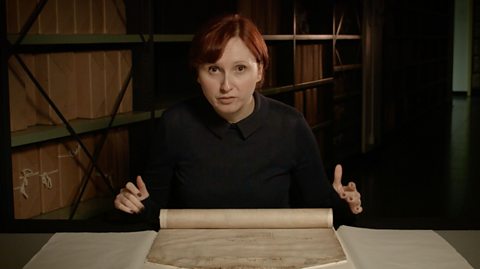
Elizabeth I. video
A look at what sources can reveal about the personality of Elizabeth I.
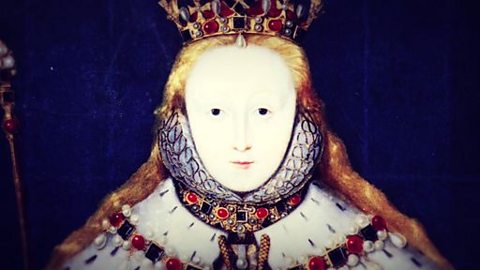
Burke and Hare. video
An exploration of how historical sources can help to explain the motivation for Burke and Hare’s 19th century killing spree in Edinburgh.
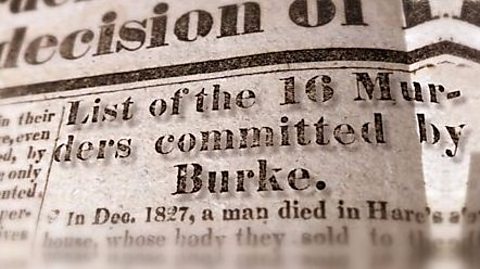
The History of Women's Football. video
Exploring sources that reveal the remarkable success of the Dick Kerr’s ladies football team during World War One.
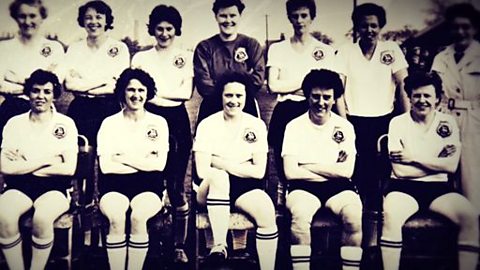
Transforming the health of Liverpool. video
Exploring what sources can reveal about the improvements to public health in Victorian Liverpool and the contribution of Britain’s first Public Health Officer, Dr Duncan.
